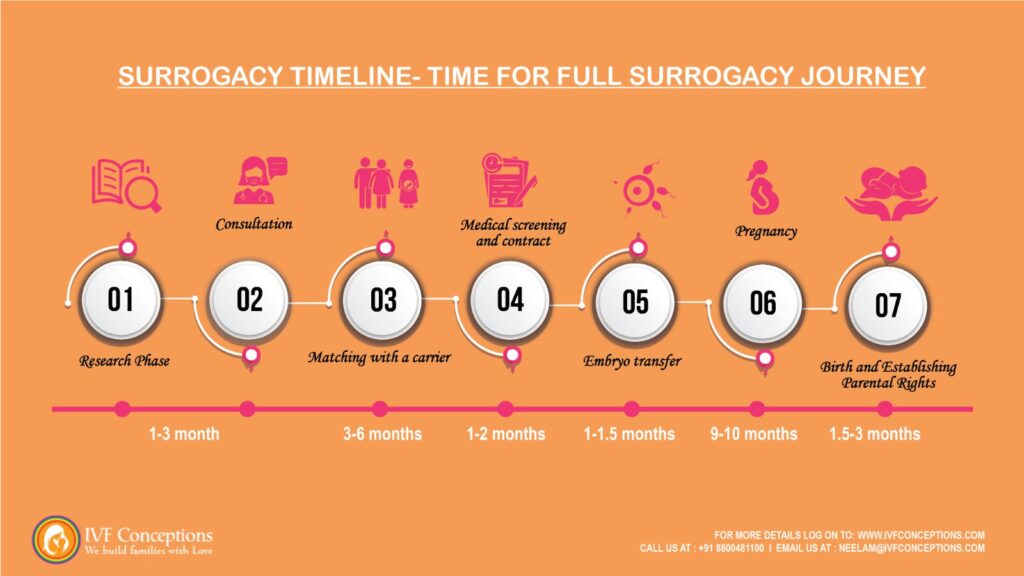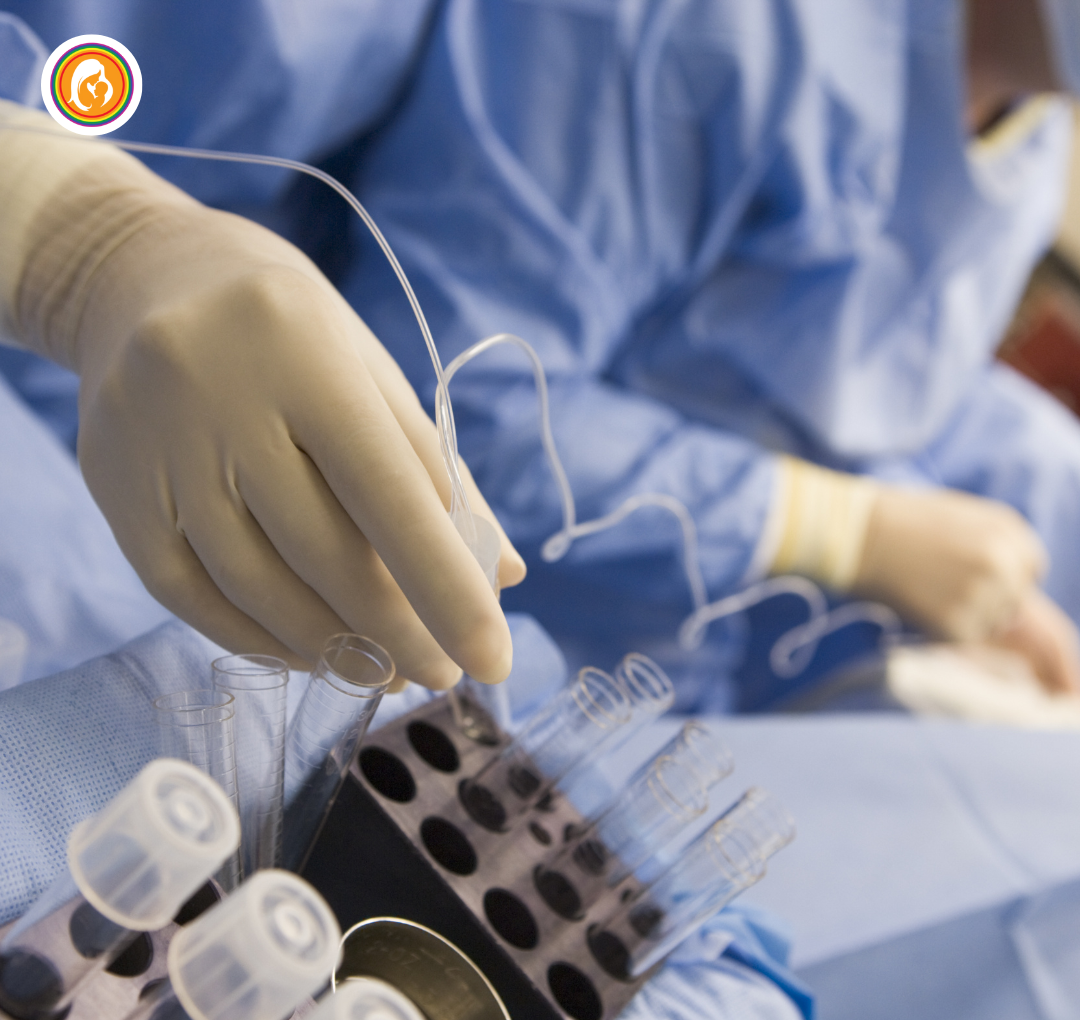How Do Surrogate Mothers Get Pregnant? A Comprehensive Guide for Intended Parents
When considering surrogacy, many intended parents find themselves at a crossroads, often turning to surrogacy after exhausting other options to have a biologically related child. The decision to pursue gestational surrogacy is both emotional and complex, involving various steps and decisions that need careful consideration.
Get in touch for FREE SURROGACY CONSULTING:
Mobile: +91-8800481100 ( WhatsApp, Line, Viber)
Email: neelam@ivfconceptions.com
In this guide, we’ll delve into the detailed process of how surrogate mothers get pregnant through IVF, providing a comprehensive overview for intended parents.
More Resources to Read:
IVF with Egg Donation in Ukraine
Surrogacy for HIV+ Intended Parents in Ukraine
Is Surrogacy in Ukraine legal?
Affordable Surrogacy in Ukraine for Married Couples
Understanding Gestational Surrogacy
Gestational surrogacy is a process that allows intended parents to achieve their dream of having a child biologically related to them. In this process, a surrogate mother carries a pregnancy created through the fertilization of an egg from the intended mother (or an egg donor) with sperm from the intended father (or a sperm donor). The surrogate has no genetic ties to the child, making this a highly preferred option for many parents.
The entire process is medically regulated and monitored, ensuring safety and ethical compliance throughout.

Types of Surrogacy: Traditional vs. Gestational
Surrogacy comes in two main types:
| Type of Surrogacy | Egg Source | Genetic Relation to Child | Fertilization Method |
| Traditional Surrogacy | Surrogate’s own egg | Surrogate is genetically related | Intrauterine insemination (IUI) or home insemination |
| Gestational Surrogacy | Intended mother’s or donor’s egg | Surrogate is not genetically related | In vitro fertilization (IVF) |
Key Differences Between Traditional and Gestational Surrogacy
-
Traditional Surrogacy:
- The surrogate mother uses her own egg, making her biologically related to the child.
- Fertilization occurs via intrauterine insemination (IUI) or home insemination.
- Less commonly used due to legal and emotional complexities.
-
Gestational Surrogacy:
- The surrogate mother carries a pregnancy with an embryo created through IVF, using the egg and sperm from the intended parents or donors.
- The surrogate has no genetic connection to the baby.
- Widely preferred due to clear legal distinctions and reduced emotional complications.
The Surrogacy Process: A Step-by-Step Guide
The surrogacy process takes 18 months to 24 months depending upon the individual circumstances
Outlines the surrogacy process timeline for intended parents:
| Stage | Description of Stage | Duration |
| Research Phase | Explore family building options and decide on surrogacy. | Personal timeframe |
| Consultation and Application | Choose a surrogacy agency, sign agreement, and start embryo creation (if needed). | 1-3 Months |
| Matching | Agency finds and presents potential gestational carriers. Meet and decide on a match. | 3-6 Months |
| Medical Screening and Contracts | Carrier undergoes medical and psychological screening. Sign surrogacy contract. | 1-2 Months |
| Embryo Transfer | Prepare for embryo transfer. Success may take multiple attempts. | 1-1.5 Months |
| Pregnancy | Gestational carrier’s pregnancy, approximately 40 weeks. | 9-10 Months |
| Birth and Postpartum | Baby’s birth, establish parental rights, and postpartum period. | 1.5-3 Months |
Please keep in mind that the durations mentioned in the table are approximate and can vary depending on individual circumstances and other factors. Always consult with a reputable surrogacy agency or professional to get personalized guidance throughout the surrogacy journey.

1. Finding a Surrogate
There are two main ways to find a surrogate mother:
-
-
- In this arrangement, the surrogate receives compensation in addition to covering the expenses incurred during the process.
- Surrogacy agencies often manage the entire process, from matching surrogates to coordinating medical and legal aspects. Countries like the USA allow commercial surrogacy, while others like Canada and the UK do not.
-
-
- Here, the surrogate does not receive any base compensation, and only the related expenses are covered.
- This type is often used when the surrogate is a friend or family member. It is the only form of surrogacy allowed in some countries, including Canada, the UK, and Australia.
2. Screening and Preparation of the Surrogate
Once a surrogate is chosen, she undergoes a thorough screening process:
- Psychological Evaluation: Ensures the surrogate is mentally prepared for the surrogacy journey.
- Medical Screening: Includes blood tests, ultrasounds, and a uterine evaluation to ensure she is physically fit to carry a pregnancy.
- Legal Contracts: Outlines the rights, responsibilities, and expectations of both the surrogate and the intended parents.
3. Medication and Monitoring
The surrogate’s preparation involves:
| Hormonal Treatments | Purpose | Duration |
| FSH (Follicle Stimulating Hormone) | Stimulates egg production | 8-14 days |
| LH (Luteinizing Hormone) | Prepares uterine lining | 2-3 weeks |
- Hormonal Treatments: To prepare her uterus for embryo transfer, the surrogate undergoes a series of hormonal treatments. Commonly used hormones include FSH (Follicle Stimulating Hormone) and LH (Luteinizing Hormone).
- Monitoring: Regular blood tests and ultrasounds monitor the development of the uterine lining. The goal is to achieve an optimal thickness (usually around 10 mm) to ensure successful implantation of the embryo.
4. Egg Retrieval
The egg retrieval process is critical in IVF surrogacy:
| Egg Retrieval Details | Description |
| Ovarian Stimulation | Fertility drugs stimulate ovaries to produce multiple eggs. |
| Procedure | Transvaginal ultrasound aspiration is used to retrieve eggs. |
| Average Eggs Retrieved | 10-20 eggs (not all may be viable). |
- Ovarian Stimulation: The intended mother or egg donor receives fertility drugs for about 8-14 days to stimulate the ovaries to produce multiple eggs. This increases the chances of retrieving viable eggs.
- Egg Retrieval: A surgical procedure known as transvaginal ultrasound aspiration is used to collect the eggs. On average, 10-20 eggs are retrieved, although not all may be mature enough for fertilization.

5. Fertilization of Eggs
Eggs can be fertilized in one of two ways:
- Conventional IVF: Eggs and sperm are placed together in a petri dish, allowing natural fertilization.
- Intracytoplasmic Sperm Injection (ICSI): A single sperm is injected directly into an egg. This method is often used when sperm quality is low or when there have been previous IVF failures.
The fertilized eggs are then cultured for 3-5 days until they reach the blastocyst stage, which is the optimal time for implantation.
6. Embryo Transfer
The next step involves transferring the embryo into the surrogate’s uterus:
- Selecting the Best Embryo: The embryologist selects the highest-quality embryo, typically a day 5 blastocyst, to maximize the chances of a successful pregnancy.
- Transfer Procedure: Using a thin catheter, the embryo is gently placed into the surrogate’s uterus. The procedure is guided by ultrasound to ensure precise placement.
- Post-Transfer Care: The surrogate is advised to rest for a few hours post-transfer to increase the chances of implantation.
7. Confirmation of Pregnancy
Pregnancy confirmation occurs in several stages:
- Initial Pregnancy Test: Performed about 12 days after the embryo transfer, measuring the level of the hormone hCG in the blood.
- Follow-Up Tests: If the first test is positive, additional tests are conducted over the next few weeks to confirm the pregnancy’s viability.
- Ultrasound: An ultrasound is typically performed at around 6-8 weeks to confirm the pregnancy and check for a fetal heartbeat.

8. Pregnancy and Birth
Once pregnancy is confirmed, the surrogate continues to receive prenatal care just like any other pregnancy:
- Prenatal Monitoring: Regular check-ups monitor the health of both the surrogate and the baby.
- Delivery: The birth can be through vaginal delivery or a C-section, depending on medical recommendations. In many cases, intended parents are present at the birth, and the legal transfer of parentage is completed shortly after.
Legal Considerations in Surrogacy
Legal aspects of surrogacy can vary significantly depending on the country or state. It’s crucial to have legal agreements in place before the process begins, outlining the rights of all parties involved. Some key considerations include:
- Pre-Birth Orders: Establish the intended parents as the legal parents before the birth.
- Post-Birth Orders: May be required in some jurisdictions to finalize parental rights.
More Resources to Read:
Cost of Surrogacy in USA: What to Expect
Who Can Become Surrogate Mother: Requirements And Info
Surrogate Mother Cost for Twins: What to Expect
Average Cost for Surrogacy: Detailed Breakdown
Conclusion
Surrogacy is a complex but rewarding journey that involves meticulous planning, coordination, and emotional investment. For intended parents, understanding each step—from selecting a surrogate to confirming pregnancy and finally welcoming a child into the world—is crucial to navigating this process successfully.
If you’d like to learn more about IVF, Egg Donation, or surrogacy services globally, check out the rest of our website at Ukraine Surrogacy Agency. We offer legally secure and affordable surrogacy consulting services for FREE.
Our team has over 14 years of experience facilitating surrogacy arrangements, egg donation, and serving as an advocacy resource for infertile couples and LGBTQ individuals seeking to build families.
Get in touch for FREE SURROGACY CONSULTING:
Mobile: +91-8800481100 ( WhatsApp, Line, Viber)
Email: neelam@ivfconceptions.com

Frequently Asked Questions (FAQs)
Q1: How does gestational surrogacy differ from traditional surrogacy?
A1: In gestational surrogacy, the surrogate has no genetic link to the child as the embryo is created using the intended mother’s or donor’s egg and the intended father’s or donor’s sperm. In traditional surrogacy, the surrogate’s own egg is used, making her the biological mother of the child.
Q2: What are the legal challenges associated with surrogacy?
A2: Legal challenges vary by jurisdiction. It’s crucial to have clear legal contracts in place before starting the process, outlining the rights and responsibilities of both the surrogate and the intended parents. Some regions require pre-birth orders to establish parentage, while others might need post-birth legal actions.
Q3: How is the embryo transferred into the surrogate’s uterus?
A3: The embryo transfer involves placing a selected embryo (typically at the blastocyst stage) into the surrogate’s uterus using a thin catheter. The procedure is done under ultrasound guidance to ensure precise placement for successful implantation.
Q4: Can the surrogate and intended parents choose to work independently of an agency?
A4: Yes, intended parents can choose to work independently of an agency, especially in altruistic surrogacy where the surrogate is often a friend or relative. However, agencies offer valuable services such as matching, legal assistance, and medical coordination, which can be beneficial.
**Q5: What is the success rate of gestational surrogacy?
A5: The success rate of gestational surrogacy varies depending on factors such as the age of the egg donor and the surrogate’s health. On average, the success rate per embryo transfer is about 50-70%, but it may take multiple attempts to achieve a successful pregnancy.

Highly esteemed, authoritative, and trusted professional with a 14-year of experience in international surrogacy. Advocate for Secure, Legal, and Affordable International Surrogacy.
Neelam Chhagani, MA (Counselling Psychology) and Holistic Infertility and Third-Party Reproduction Consultant.
Member of European Fertility Society, Best Surrogacy Blogger of 2020, with 300 dedicated blogs, and top contributor on Quora for Surrogacy.











Add Your Comment